How to tie a renegade fly for fly fishing
One of my favorite flies to tie and use on some of Montana's mountain streams is the Renegade dry fly. It's easy to tie, and effective on the water.
203
STEPS
TOOLS
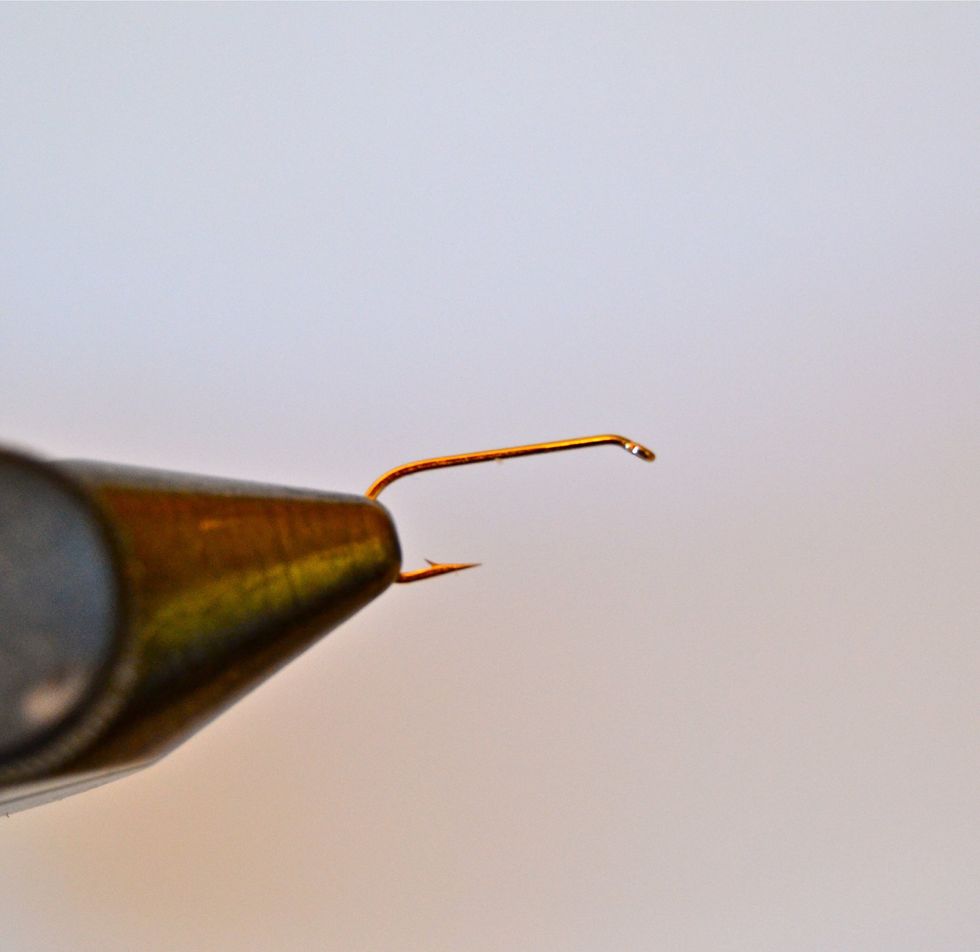
Begin with the dry fly hook of your size choice. In this guide I used a size 14.
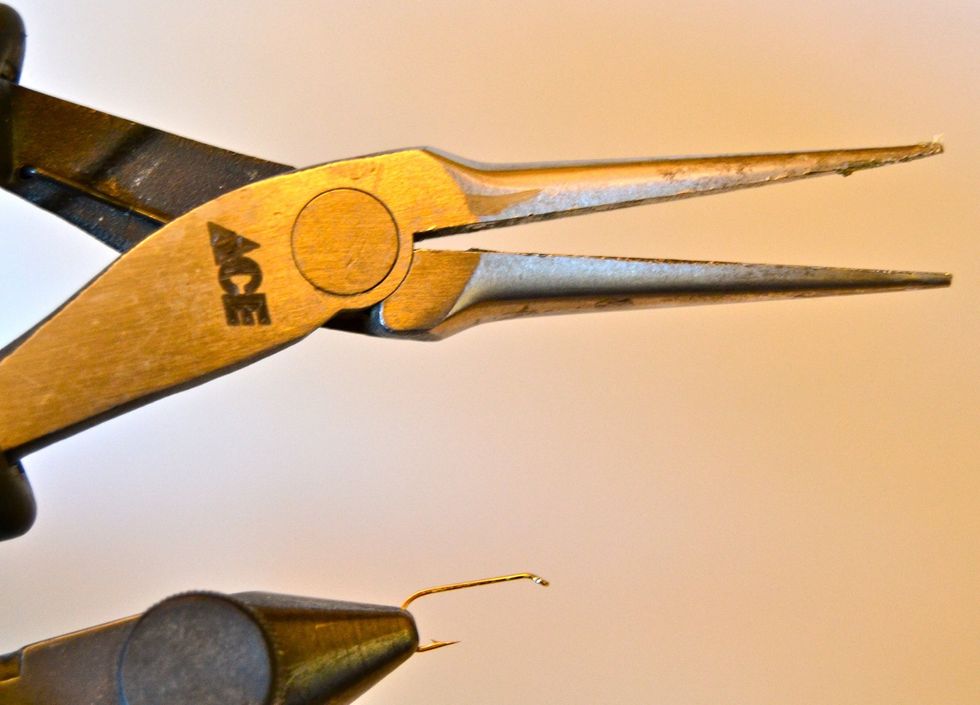
Some regulations require the use of barbless hooks. If you use barbed hooks, you can de-barb them by squeezing the barb flat with a pair of needle nose pliers. (I personally de-barb all my hooks.)
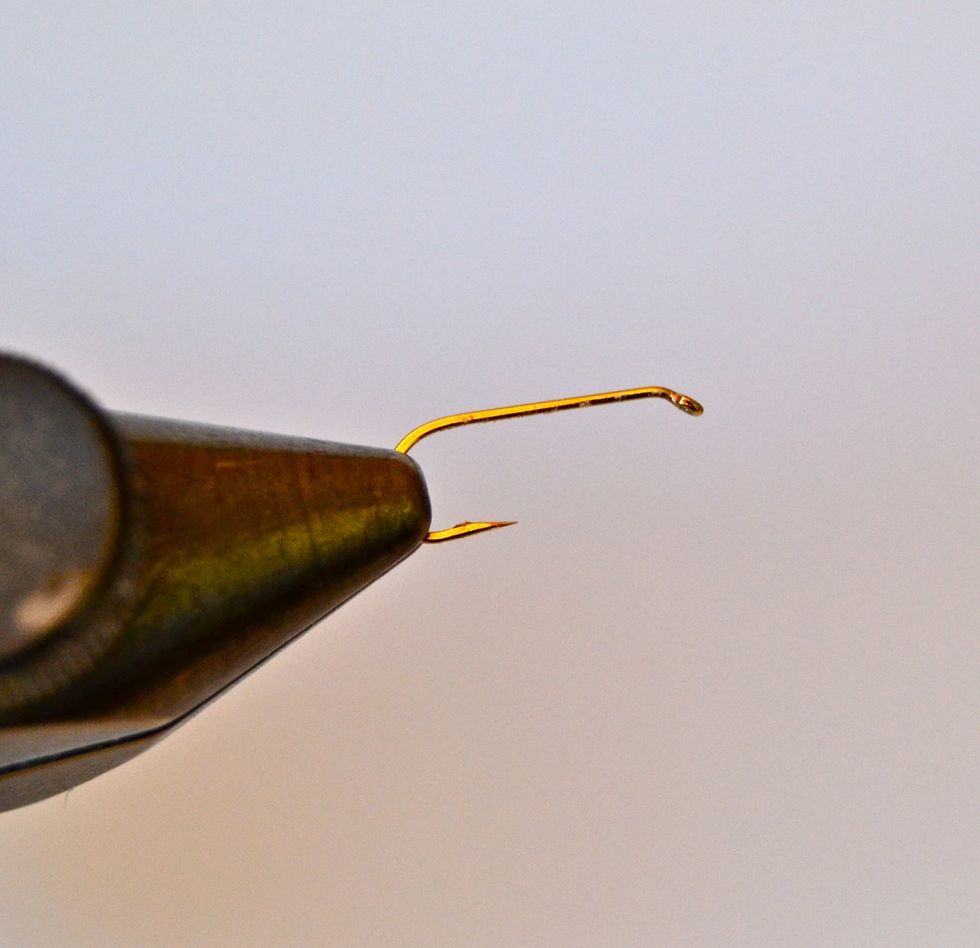
My hook de-barbed after squeezing the barb flat with pliers.
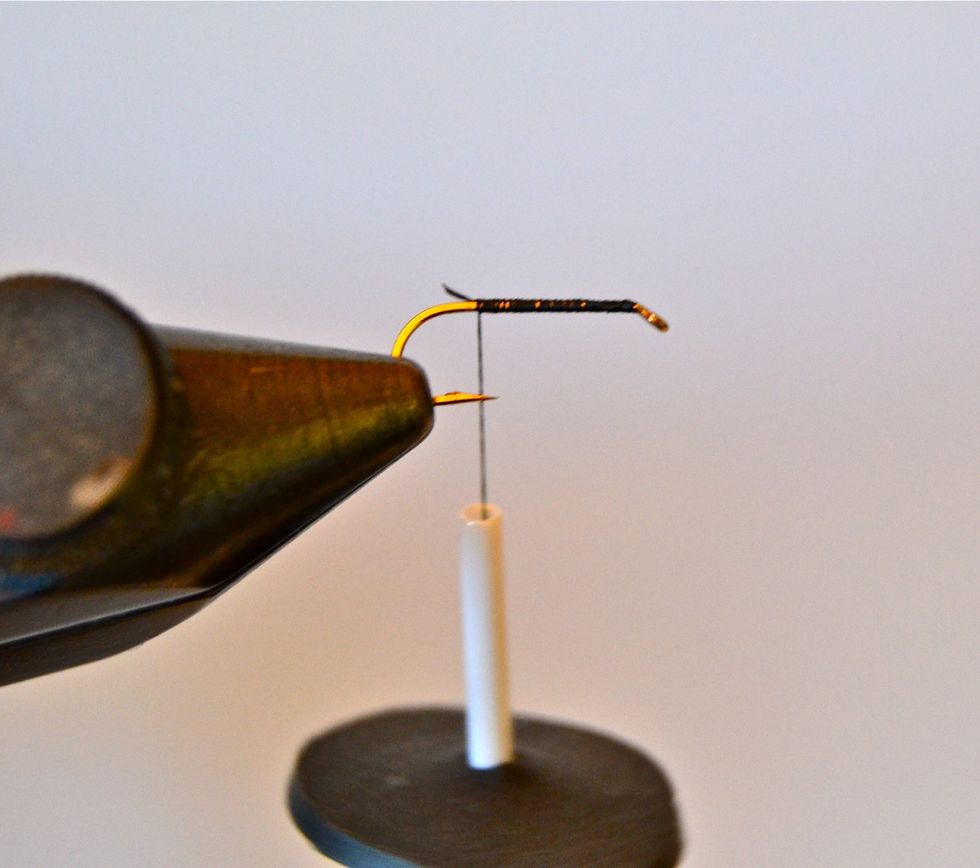
In this guide I used 6/0 black fly tying thread. Wind your thread from behind the eye back to and just past the beginning of the curve in the hook.
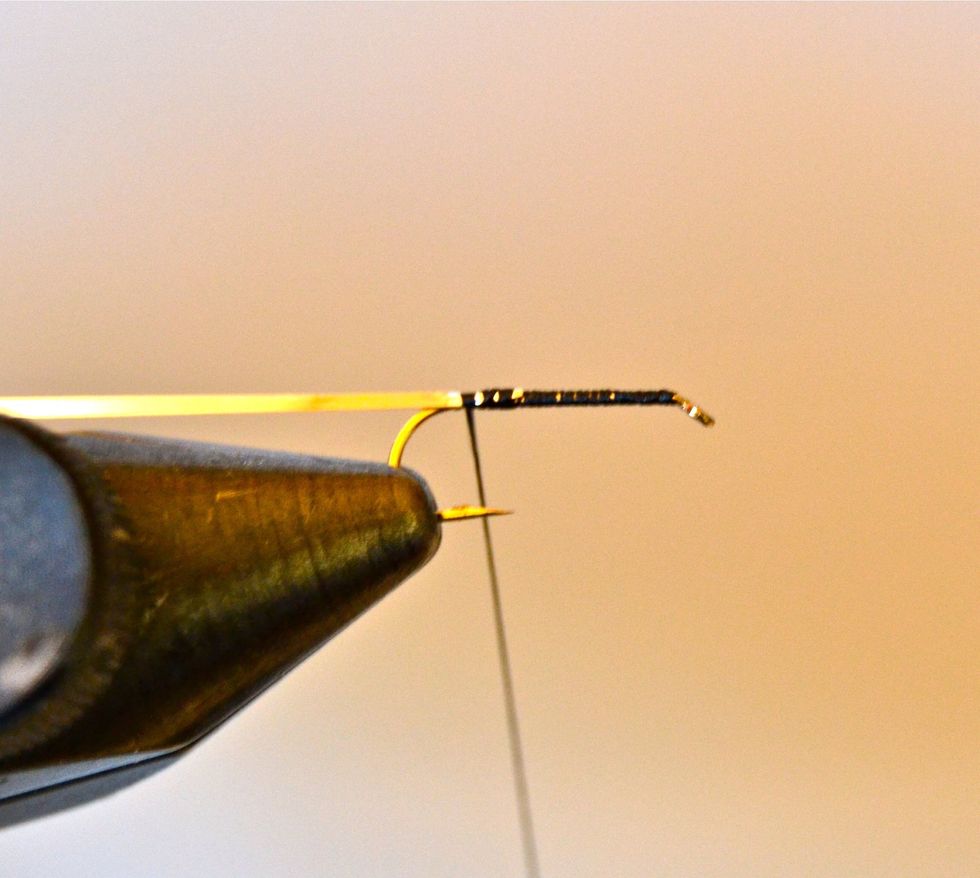
Tie in a short piece of silver or gold tinsel a short distance down the curve of the hook. (1/32 width was used in this guide.)
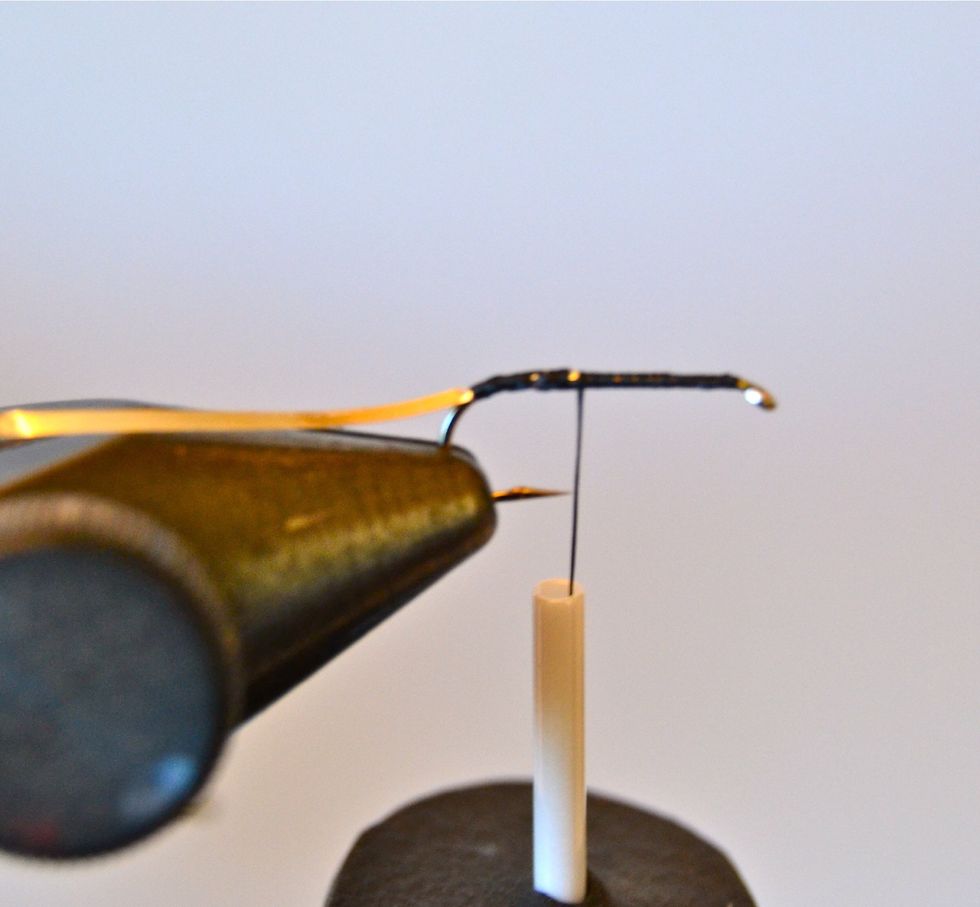
Wind the thread back up the hook shaft toward the eye about half the distance to the eye.

Wind the tinsel around the shaft just past where the shaft becomes straight and tie off.

Tie in a single strand of brown hackle just past where the shaft straightens. In this guide a size 14 brown hackle was used.

Wind the brown hackle forward 4-5 full turns, tie off, and cut off remainder of brown hackle.
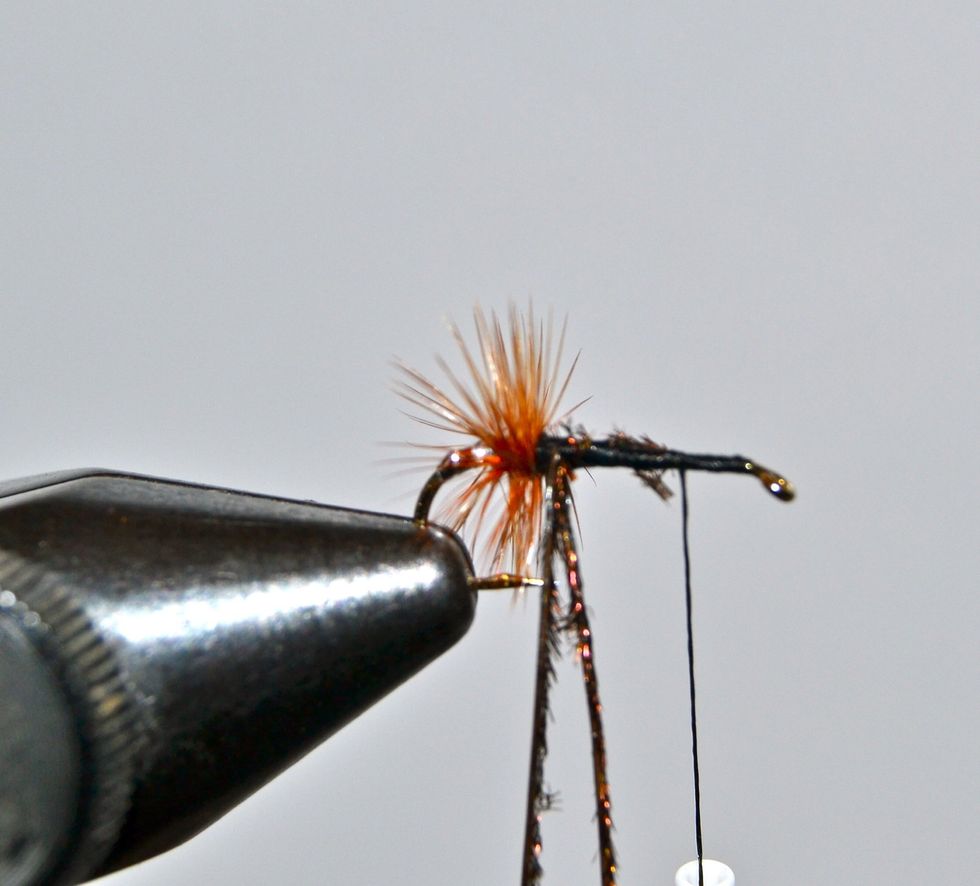
Tie in peacock hurl tightly against where the brown hackle ends. (Some folks use just one strand of hurl....I prefer two in most cases.)
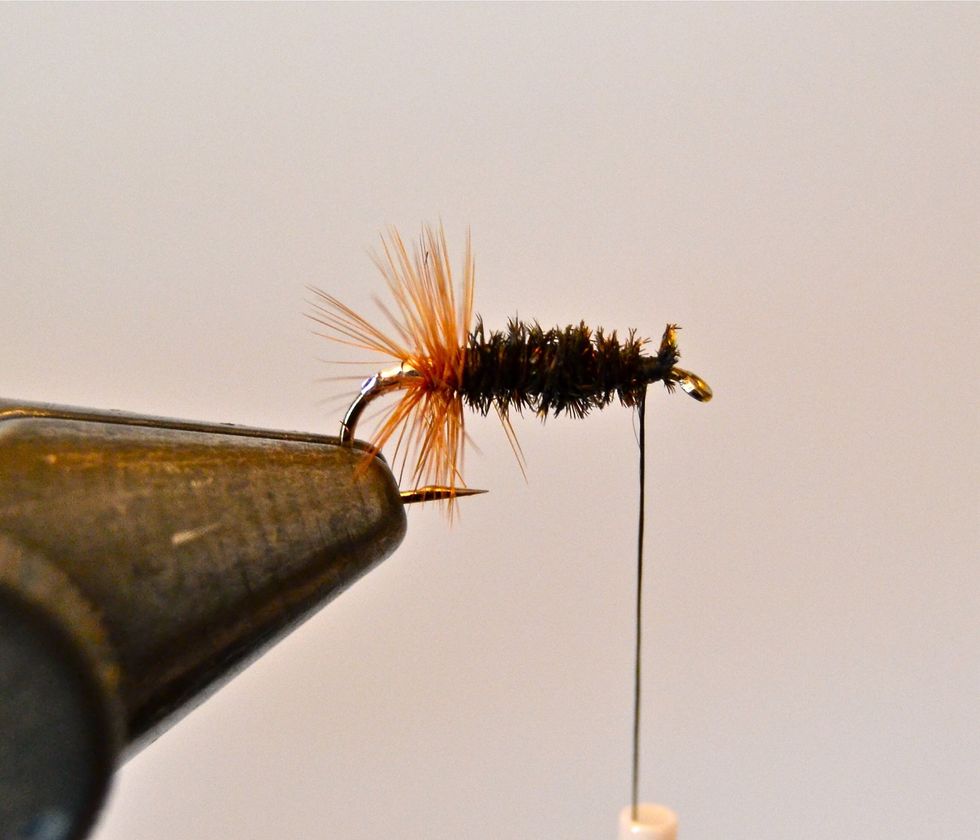
Wind peacock hurl forward with tight wraps toward the eye and tie off leaving enough space to wind in 4-5 wraps of size 14 white hackle.

Tie in a single size 14 white hackle tightly against where the hurl ends.
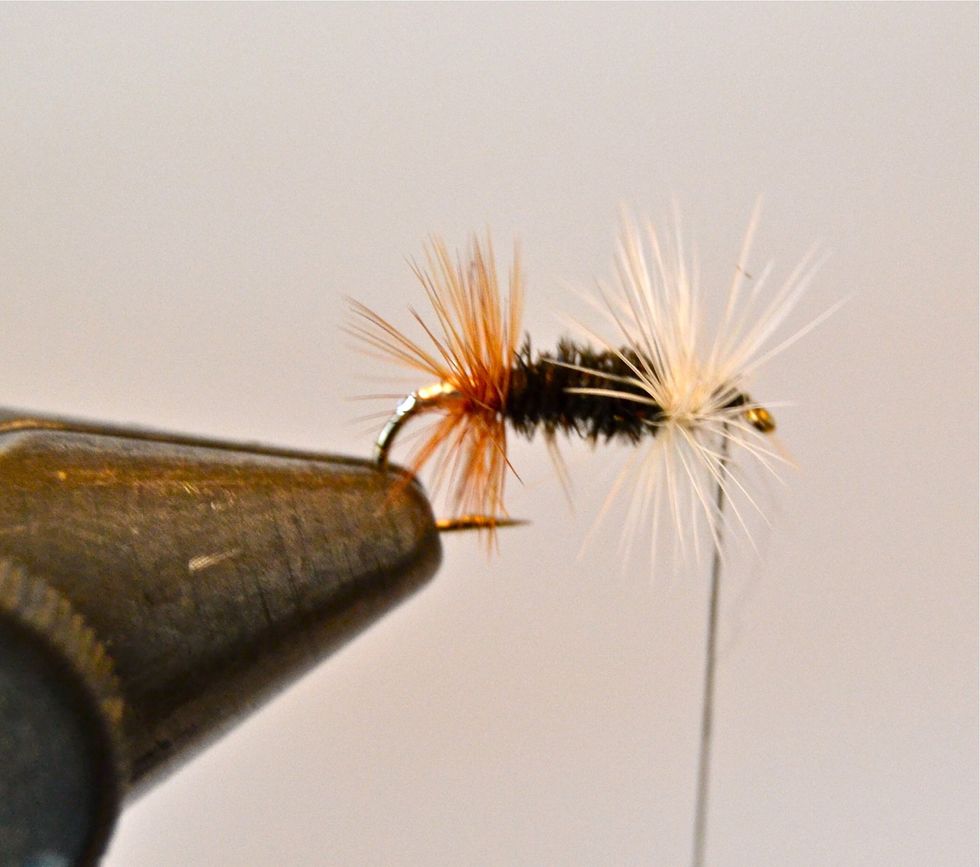
Wind the white hackle towards the eye tightly 4-5 wraps, tie off, and cut off remaining hackle.

Whip finish and finish tying forming a small black 'head' and then cut off the black thread.
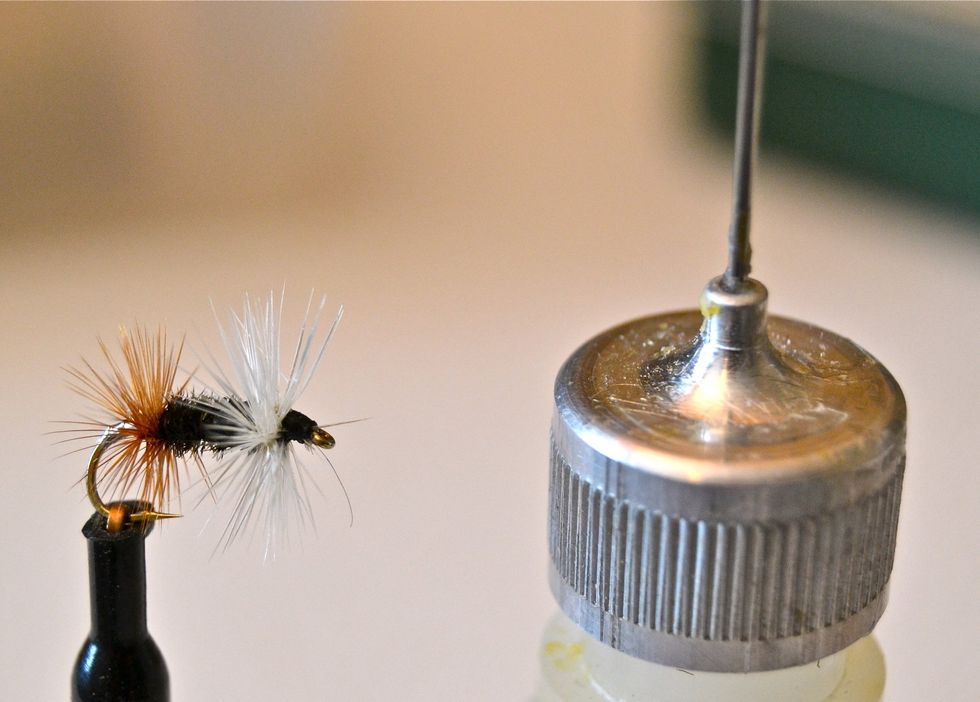
Although not mandatory, I highly recommend a nice soaking of head cement to keep the thread from unraveling.

Allow head cement to dry, and then go catch some nice trout. I
- Black fly tying thread - 6/0
- Dry fly hook - sizes 12 to 18
- Size 10 to 14 white or cream hackle
- Size 10 to 14 brown hackle
- Peacock hurl
- Head cement
- Silver or gold tinsel
- Needle nose pliers